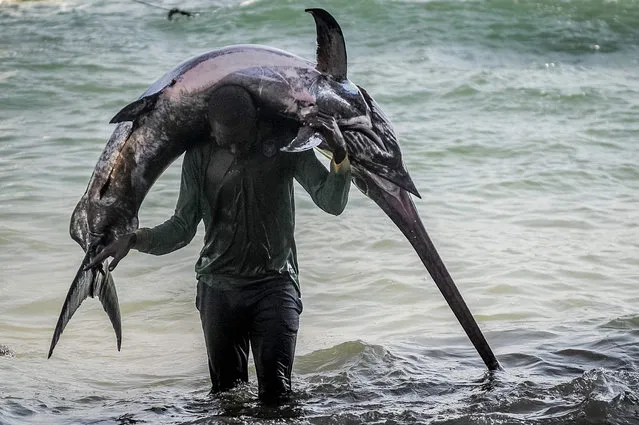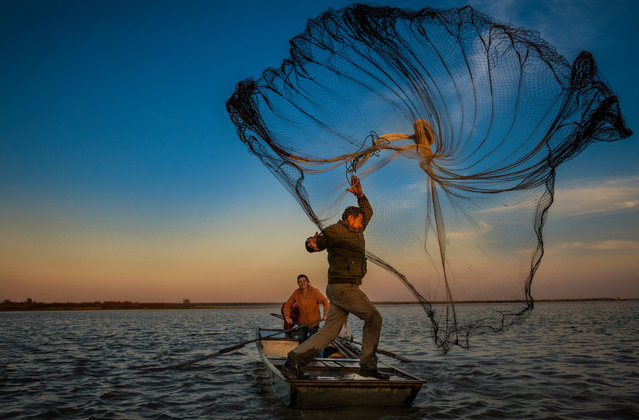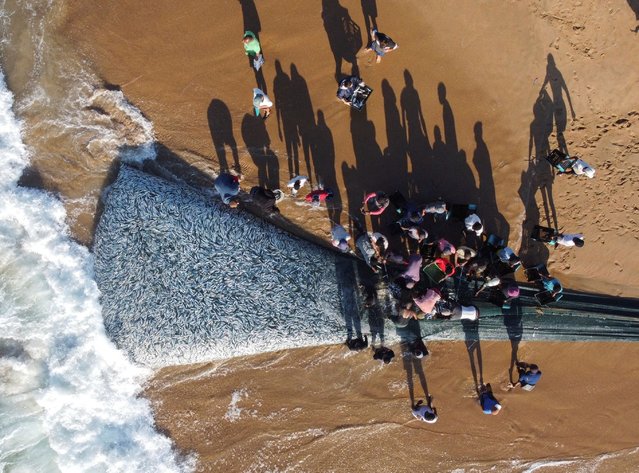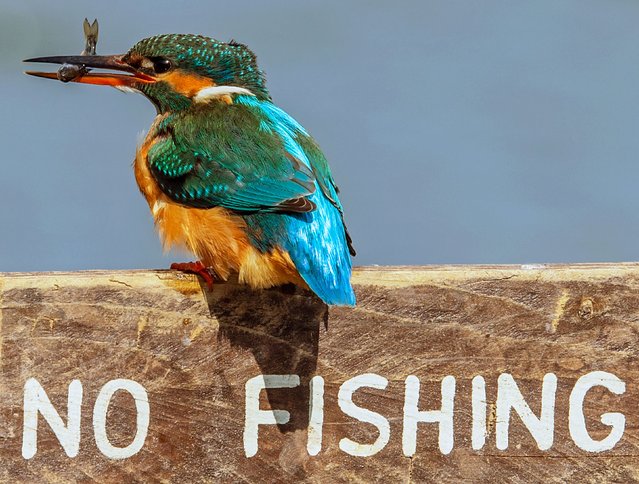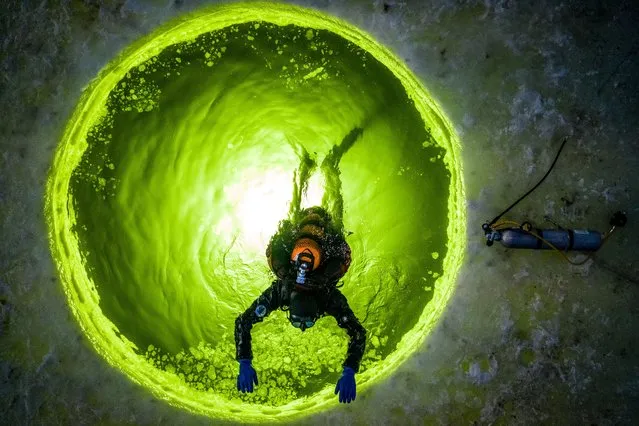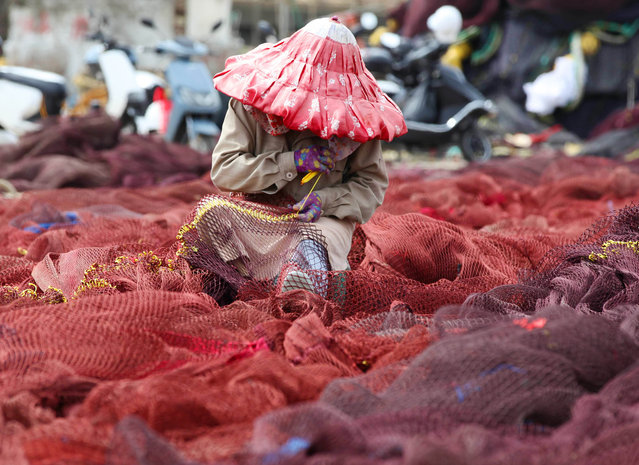
A fisherwoman repairs the fishing nets at a fishing port during the annual summer fishing ban, which covers the Bohai Sea, the Yellow Sea, the East China Sea, and the waters north of 12 degrees north latitude in the South China Sea, on June 8, 2022 in Wenling, Taizhou City, Zhejiang Province of China. (Photo by Liu Zhenqing/VCG via Getty Images)
15 Jun 2022 04:09:00,post received
0 comments

